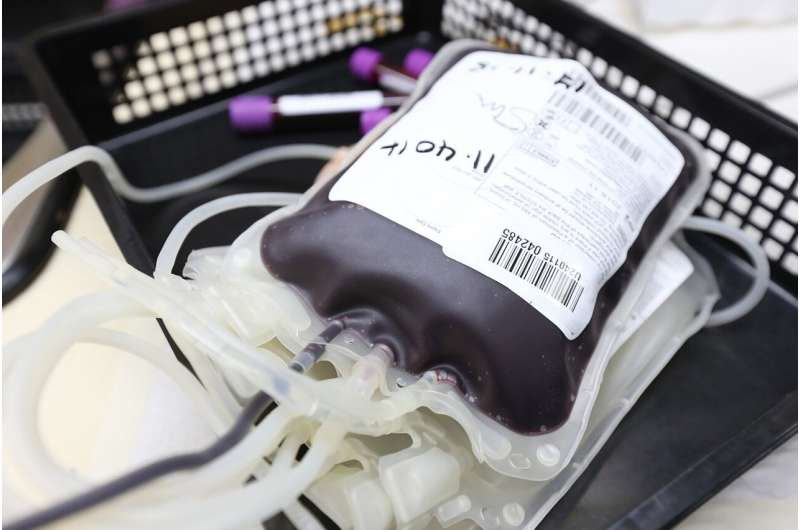This article has been reviewed according to Science X's editorial process and policies. Editors have highlighted the following attributes while ensuring the content's credibility:
fact-checked
peer-reviewed publication
trusted source
proofread
New red blood cell transfusion guidelines recommend an individualized approach

An international panel of experts co-chaired by Jeffrey Carson, Distinguished Professor of Medicine at Rutgers Robert Wood Johnson Medical School, has developed guidelines for new strategies that could help preserve the blood supply and prevent complications that result from transfusions.
Published in JAMA, the guidelines recommend a more restrictive approach in determining optimal treatment for patients where red blood cell transfusions might be unnecessary.
The panel urged an overall clinical context "including signs, symptoms, comorbidities, conditions, and patient values and preferences that will differ between patients" be taken into account on case-by-case basis to ensure each patient receives optimal treatment.
It examined past clinical trials to determine optimal transfusion strategies. For adults, the experts reviewed 45 randomized clinical trials representing a total of 20,599 patients; for pediatric populations, they reviewed seven randomized clinical trials representing 2,730 patients. The panel compared patient outcomes with restrictive hemoglobin-based transfusion thresholds—defined as 7 to 8 g/dL—with more liberal transfusion thresholds—defined as 9 to 10 g/dL.
They recommended that transfusion should be considered for hospitalized adult patients—with and without hematologic and oncologic disorders—when the hemoglobin concentration is less than 7 g/dL. Alternatively, based on the restrictive strategy threshold used in most trials, clinicians may choose a threshold of 7.5 g/dL for patients undergoing cardiac surgery and 8 g/dL for patients undergoing orthopedic surgery or those with pre-existing cardiovascular disease.
They recommended that transfusion should be considered for critically ill children and those at risk of critical illness with a stable heart rate and blood pressure who do not have low oxygen in the blood or abnormal hemoglobin as in the case of sickle cell disease when their hemoglobin concentration is less than 7 g/dL.
For children with a stable heart rate and blood pressure who have congenital heart disease, a transfusion threshold based on the cardiac abnormality and stage of surgical repair is recommended: A threshold of 7 g/dL is recommended for children undergoing biventricular repair; a threshold of 9 g/dL is recommended for children with single-ventricle 1 palliation; and a threshold of 7-9 g/dL is recommended for children with uncorrected congenital heart disease.
The experts noted that although these guidelines will serve to provide transfusion recommendations for many patients, some knowledge gaps remain. Additional research is needed to better determine optimal transfusion thresholds for patients with acute myocardial infarction, vascular disease and neurological disorders, among other health conditions.
"We know clinicians commonly use only hemoglobin thresholds to decide when to transfuse," said Carson, who chaired the adult panel. "Alternatively, we urge clinicians to incorporate into the decision to transfuse an assessment of each patient's co-morbidity, symptoms and signs in addition to hemoglobin concentration."
"These recommendations, based on a thorough analysis of currently available scientific literature, represent an important approach to determine treatment based on each patients' individual health factors," said Claudia Cohn, chief medical officer of the Association for the Advancement of Blood & Biotherapies and a member of the panel.
More information: Jeffrey L. Carson et al, Red Blood Cell Transfusion, JAMA (2023). DOI: 10.1001/jama.2023.12914

















